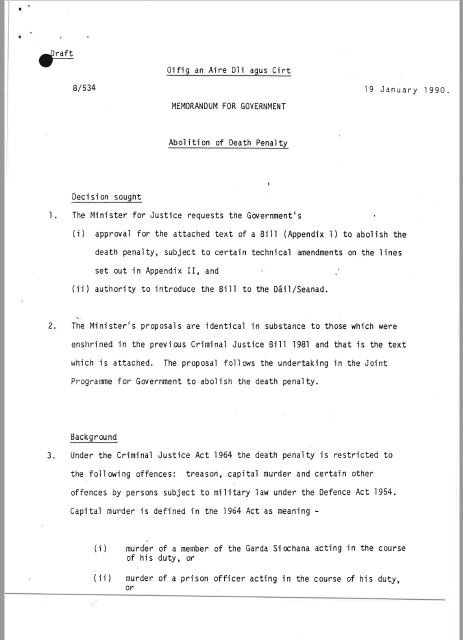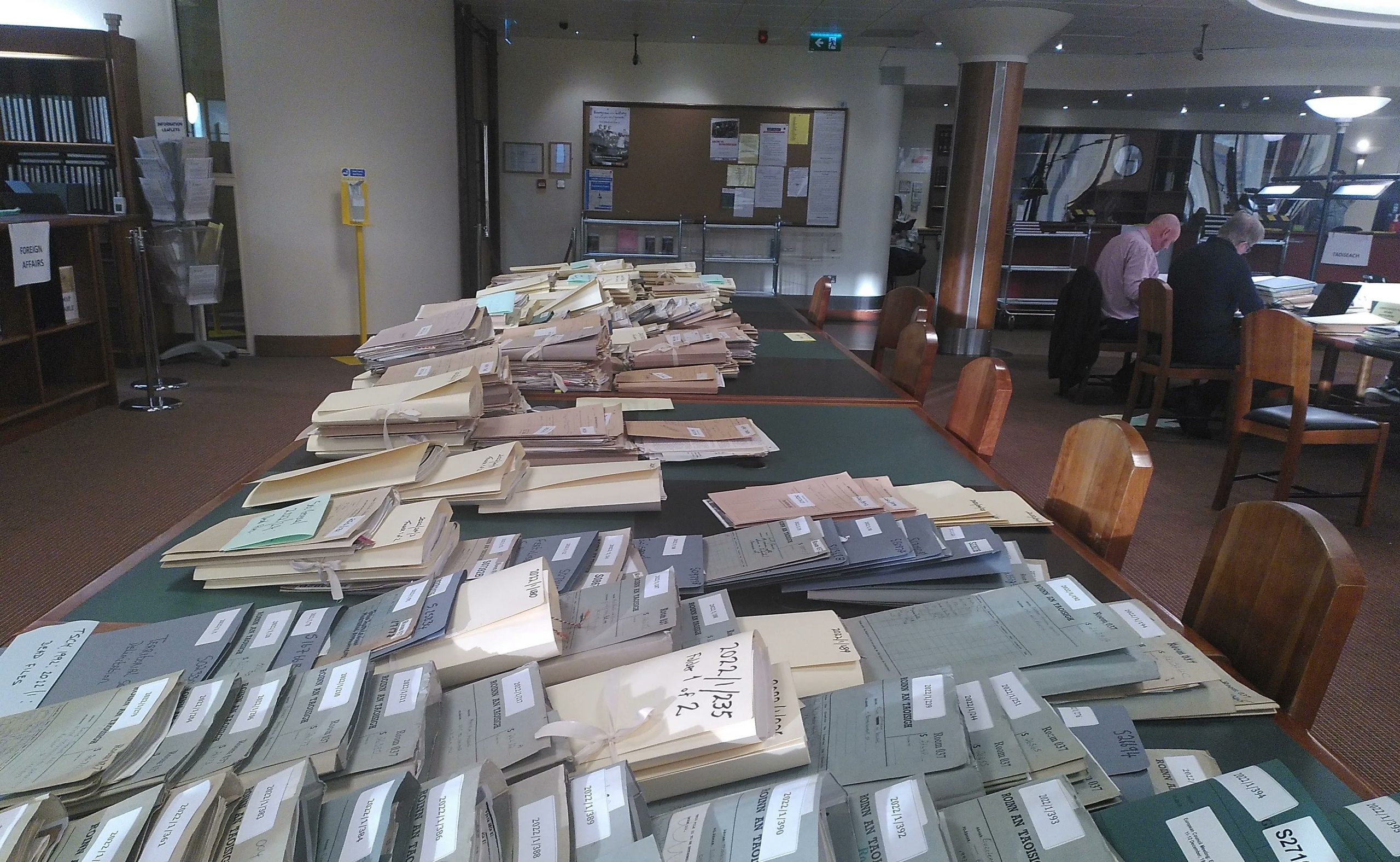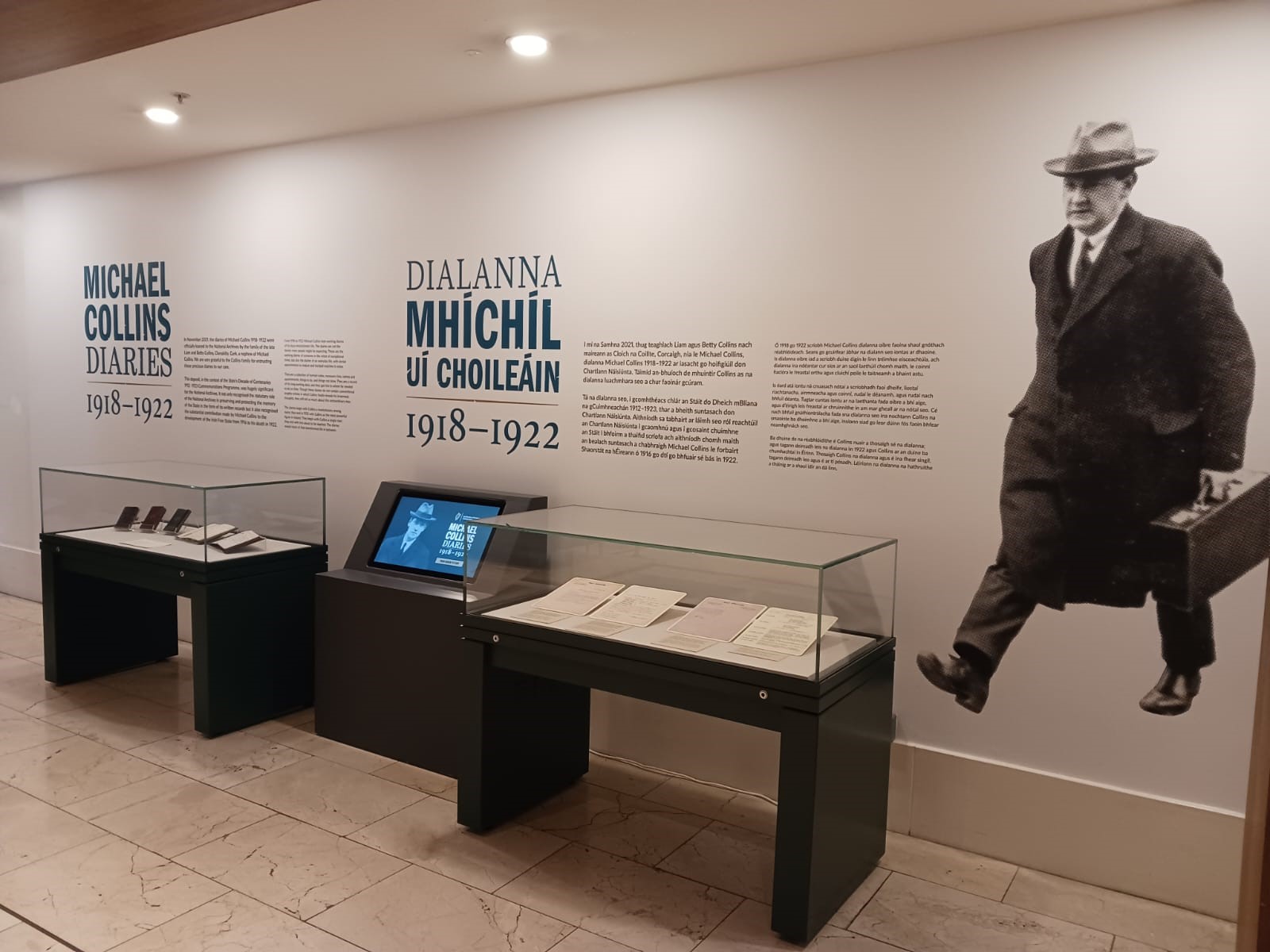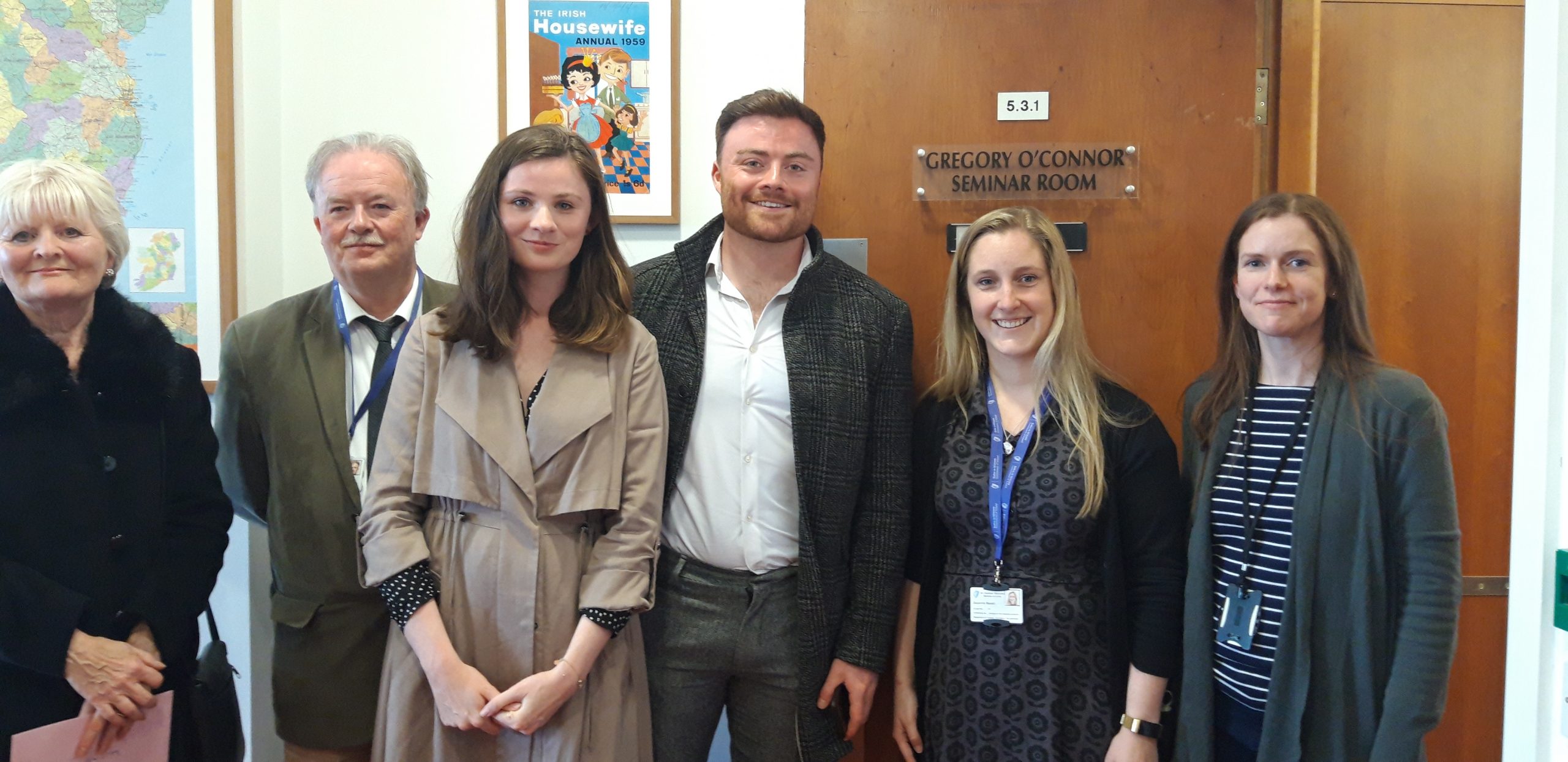Behind the Scenes
Behind the Scenes: Working in Archives and Government Services (during the pandemic)

This week (7-11 June) is International Archives Week with the theme this year of empowering archives. The campaign focuses on how archives empower accountability and transparency, through access to information for holding governments to account and ensuring that citizens can protect their rights.
Antoinette Doran, archivist in the Archives and Government Services division of the National Archives, explains below how our work to uphold the principles of empowering through access the rights of the citizen continued in one of the most difficult periods of recent times.
Working in AGS (Archives and Government Services) during the pandemic.
‘Most archivists don’t like surprises. That’s why we work in the past.’
This is a quote from The Inner Circle, a novel by Brad Meltzer. I would say it’s a pretty fair summation of how many in my profession feel. There’s a comfort in working with old news, in knowing the outcome and looking back at the event from the relatively safe distance of at least three decades.
The surprise of a global pandemic is certainly not something any of us liked. I’m an archivist in the AGS (Archives and Government Services) section of the National Archives. If someone had told me at the beginning of 2020 that I would be working from home, unable to attend the office, consult the archives or see my colleagues, I would not have been able to envision how I could do my job. Yet one year on, and I’m now doing exactly that, still undertaking the work I once did, and finding new projects that can be done remotely.
The work of my division includes training staff from government departments and court personnel on preparing records for transfer; organising and checking annual transfers of records; preparing finding aids for the reading room and website; and organising the annual media preview. Some of these tasks can be done remotely, using video conferencing to undertake training, organising transfers by email, and preparing finding aids using our remote access laptops to work on our cataloguing software. However, there is no escaping the essential need to actually look at the collections. Incoming boxes need to be checked, descriptions need to be clarified, and reference codes need to be confirmed.
The records transferred to us in 2020, for public release in 2021, operate under the 30 year rule. These records usually arrive a couple of months before the media preview in early December. This allows us to check the lists, ensure all records are present, and undertake any repacking needed to enable them to be consulted by the journalists in December and the general public in January. This is a super busy time in our section but definitely my favourite time of year. We begin by looking back at the year being transferred, usually via a YouTube video of Reeling in the Years (although that may just be me!). It’s important to know what major national and world events dominated the news that year, so that we can look out for these as we are checking the files, and provide an overview of the general contents in preparation for their release.
1990 was the year we received in 2020 for public release this year. As an archivist, you know you are getting old when you actually remember events in the news from that year. Is 1990 really 30 years ago?! Alas it is, and we had some very interesting files to make available for release. Initially, we discussed whether it would still be possible to hold the media preview, putting in place appropriate safeguards and social distancing in our reading room. However, in the end it was simply not feasible to go ahead with the physical preview. The transfer of records from government departments requires a significant amount of work by them, including identifying, listing and packing the files for release. We were very happy to receive these files and felt strongly that we needed to make them available for journalists in some form.
The decision was taken to provide digital copies of a selection of files. In theory, this sounds like a straightforward task, but like all such tasks it’s never as easy as it first appears. In order to select the files for scanning, we had to look through the lists and identify potential files, then physically check each one to see if it was appropriate for scanning. This was my primary task, and one which I really enjoyed. I usually don’t get the opportunity to read through so many files and examine the wide span of subjects concerning the government during the year of transfer.
We then had to scan the files, which is a time consuming process to say the least. A significant quantity of the files contained hundreds of pages, and as these are archives, they must be treated with great care and attention whilst being handled. Our conservator assisted in developing our workflow and advised on the best course of action for tricky items within the files (of which there are always many!). Thankfully we were back in the office on a rotational basis at this stage, so we were able to devote our office time to scanning. In the end, we managed to scan 100 files in a couple of weeks and made them available to journalists on the 21st of December.
Although there are many lessons we learned from this process, overall we were really happy to have made so many files available. It was rewarding to see them being used by journalists, as is evident by the RTÉ coverage at https://www.rte.ie/news/ireland/2020/1226/1186470-state-papers-1990/. Despite the global pandemic, it is heartening to know that we can still continue to undertake the release of state papers, a fundamental part of our democracy which supports accountability and transparency. From our current position, there is something reassuring about looking back at 1990, a volatile and globally significant year that saw German reunification, the release of Nelson Mandela, and the beginnings of the Northern Ireland Peace Process.
To access the scanned files from the 1990 release please visit our website at https://www.nationalarchives.ie/article/1990-annual-release-of-government-archives/
Antoinette Doran, Archivist


